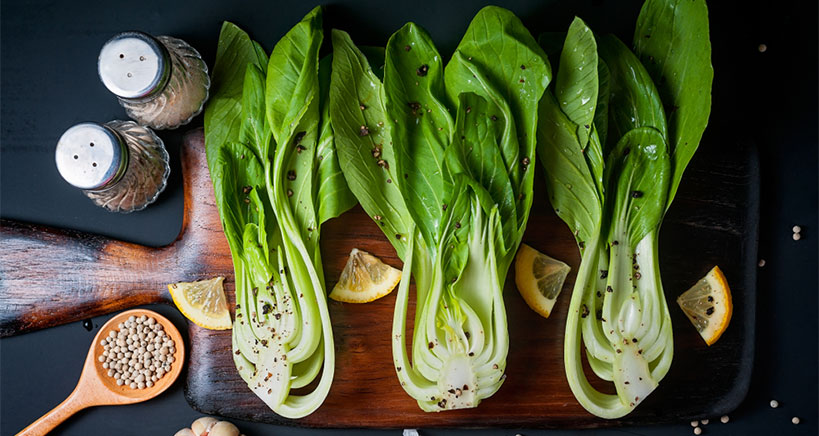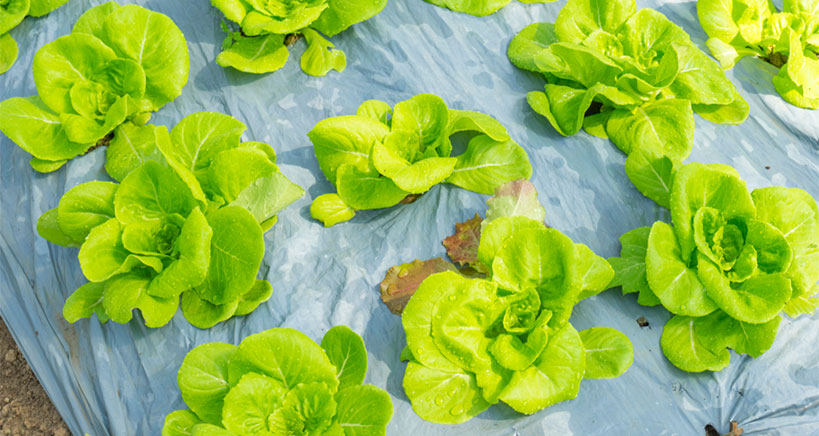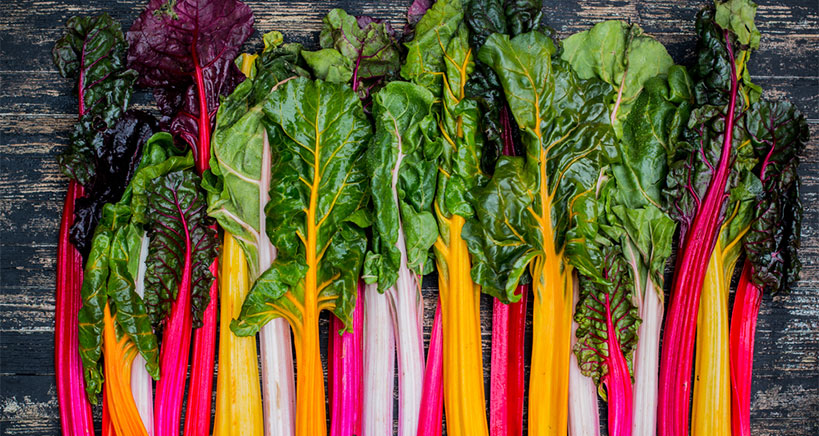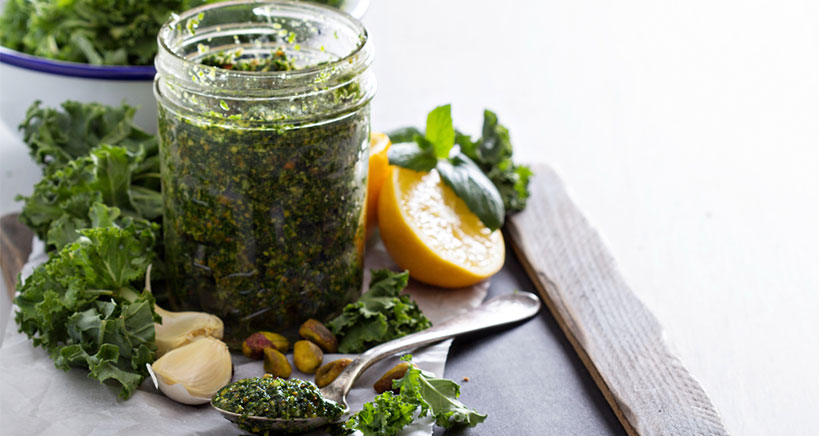
New Leafy Greens Capturing the Market
If you follow current restaurant industry trends, you have likely come across some rather odd newcomers in lettuces and leafy greens. Traditional salad fanfare still includes iceberg, Boston, and romaine lettuce, kale, spinach, cabbage, broccoli, and Brussels sprouts. However, making their produce debut and increasingly making the foodservice cut are alternative leafy greens such as endives, radicchio, chard, arugula, bok choy, watercress, and more.
New Names in Salads
When it comes to salads, you might have noticed some of the following ‘new’ names in the biz. For example, it turns out that all lettuces can be divided into one of four main categories. These are: romaine, looseleaf, butterhead, and crisphead. The familiar iceberg lettuce is in fact an example of a crisphead. Crispheads are round and feature tightly packed leaves. Butterheads, aka crisphead ‘cousins,’ are round as well, however the leaves are looser with a smoother texture. Looseleafs, as their name implies, are loosely gathered in the form of a rosette. Finally, you can spot romaine types of lettuce by their signature elongated leaves and thick white ribs.
And here is some more leafy green info for you to toss into the mix, this time from an expert. “Different types of lettuce have varying levels of specific nutrients. For example, spinach is higher in iron than kale, but kale provides glucosinolates, compounds that may decrease your risk of certain cancers,” explains Good Housekeeping Institute’s Nutrition Director, Jaclyn London (MS, RD. CDN).
If you work in the foodservice business, pay close attention to these details as becoming familiar with the gamut of leafy green vegetables is the wave of the future. In the words of another food industry maven: “The definition of ‘salad’ is rapidly expanding, and with increased variation comes increased consumer interest.”
Wild Weeds Edging out Best-Selling Kale
Although much of the new produce was once deemed exotic or was unheard of in the mainstream, today leafy green varieties are strongly trending. In fact, wild weeds such as dandelion greens, amaranth, and sorrel are not only making their restaurant menu debuts, but they are edging out the most recent leader of the pack, kale. The good news is that no matter what choice you make, all of nature’s greens come packed with water, fiber, antioxidants, vitamins, and essential nutrients. Having said, that, not all greens are created equal! So what is the recipe for success? According to the experts, the key is to mix assorted leafy vegetables into your dishes, which will give them the biggest nutritional boost.
Walking Down the Produce Aisle in 2019
To help you make sense of it all and empower you to be a valuable source of information for your customers, ‘let-tuce’ walk you down the produce aisle and give you the low-down on the most trending salad ingredients and the type of nutritional punch each one packs.
Kale
There are good reasons for kale being hailed as the superstar of the greens and as a superfood in its own right. These include its rich nutrient content and heart-protecting, immunity boosting properties. Kale is rich in vitamins A, C, and K, and it is also chock-full of antioxidants, calcium, and fiber. Due to its strong semi-bitter flavor, it is best to consume kale in smaller amounts at first, or to experiment with the more mellow baby kale before graduating to curly and lacinato kale varieties. (If you are a chef who is hungry for more tasty tidbits, lacinato kale has striking dark blue-green to black leaves and is also known as Tuscan kale, black kale, cavolo nero, and dinosaur kale. To offset its bitterness in recipes, you can also blend kale with sweet fruits such as bananas and mangos).

Leaf lettuce
One of the more nutritious of the lettuce family, leaf lettuce is low in calories and high in potassium and vitamins A and K. The latter is known to promote strong bones and prevent fractures later in life.
Iceberg lettuce
On the other side of the nutrient spectrum, you may be surprised to learn that one of the hitherto best-known types of lettuces, iceberg lettuce, is among the least nutritious salad greens. Its flavor is cool and crisp, however it contains only 3% of the daily requirements for vitamin C and only 7% of vitamin A per cup.
Butter (aka Boston) Lettuce
Butter lettuce, also known as Boston lettuce, or the smaller head variety known as Bibb lettuce, are the most nutritious of the lettuces as its leaves are higher in folate, iron, and potassium than its counterparts.
Romaine Lettuce
Deemed by the Centers for Disease Control and Prevention (CDC) as one of the top 10 powerhouse foods, romaine lettuce is an excellent source of vitamin A and assorted B vitamins. Its high antioxidant levels give it cancer-fighting powers, while its high folic acid content aids in fighting depression.
Radicchio
A member of the chicory family, radicchio is especially loaded with vitamin K, containing more than 100% of recommended daily values.
Endive
Endive, also from the chicory family, is full of vitamin K and also provides 20% of your daily vitamin A intake.
Chard
If you haven’t included chard in your restaurant’s recipes, put it at the top of your shopping list now. Considered a top powerhouse food, it has the highest vitamin K content than any other leafy green, as well as significant amounts of magnesium, which is known to influence muscle and nerve function, regulate blood pressure, and balance blood-glucose levels. Not sure how chard looks? Look for a leafy green with signature red or rainbow stems.
Watercress
Watercress is hailed as the “the fountain of youth vegetable” due to its super-high nutrient density, which includes four times the beta carotene of an apple and 100% of the daily recommended intake of vitamin K, keeping your skin glowing and looking fresh.
Arugula (aka Rocket)
While low on the nutrient totem pole as compared to other greens, arugula’s distinct peppery taste still makes it a popular new choice in salads and other recipes. It is also a great source of calcium, and like all the leafy greens, it contains small amounts of many vitamins, as well as powerful antioxidants.
Parsley
Did you know that each of parsley’s small leaves are full of bone-strengthening vitamin K? And similarly to all the leafy greens, parsley boasts high levels of disease-fighting antioxidants.

Spinach
When it comes to all-around nutritional content, spinach ranks high on the list. It is packed with potassium and iron, and in fact, 180 grams of boiled spinach contains 6.43 mg of iron, an essential nutrient that your body cannot produce on its own. A single leaf of spinach is said to have more than 20 different nutrients! Contrary to popular belief, however, spinach is not as high in protein as Popeye may have led you to believe.
Bok Choy
Heart-healthy bok choy tastes somewhat like spinach, with tender leaves and a distinctive bitter flavor. Like cabbage, broccoli, and kale, it is a member of the brassica family and is considered a powerhouse leafy vegetable loaded with vitamins A, C, and K, calcium, and folate.
Dandelion Greens
If you haven’t heard of them yet, get ready to make a close acquaintance with dandelion greens, which are expected to trend strongly in 2019. This impressive and powerful leafy green is one of the best sources of iron and calcium, is high in vitamins C and A, acts as an anti-inflammatory, and is good for your eyes, heart, and lungs. Its taste is especially bitter, however its rich nutrient content is especially sweet!
Green Smoothies
Have you heard about the latest trends in desserts? Simply take a standard dessert recipe, add a large dose of healthy ingredients, and you have an instant crowd-pleaser. In the case of vegetables, say hello to scrumptious green smoothies, blending your choice of leafy greens with your favorite smoothie ingredients. Visit here to check out some of the most popular flavors, including Banana Nectarine Chard, Pumpkin Seed and Cantaloupe, Green Coconut Cream Pie, and more.
Futuristic Salads
Hold onto your chefs’ hat as you check out how futuristic restaurant robots are being used to prepare the perfect salad. In other words, meet Chowbotics’ Sally:
Sally the salad-making robot has arrived, and she may be the next big thing that can satisfy your customers’ hunger for food-service automation. The creation of Redwood City, CA-based Chowbotics, Sally is a programmable robot that is about the size of dorm refrigerator. Using proprietary robotics technology, Sally can dispense and accurately measure 21 different healthy ingredients, including romaine, kale, seared chicken breast, Parmesan, California walnuts, cherry tomatoes and Kalamata olives. She mixes and dispenses the ingredients, while maintaining a precise temperature control and can put together 1,000 unique salads, all while the customer watches.
Chowbotics CEO and founder Deepak Sekar says that fast food restaurants with Sally serving up salads will attract more health-conscious patrons, as her recipes with their healthy ingredients contain far fewer calories than the typical 400 calorie options available at many quick-serve restaurants and salad bars… “Sally is the next generation of salad restaurant,” Sekar told the San Francisco Chronicle… The company also notes that for restaurant owners, Sally has advantages over human labor: she is dependable and predictably efficient, requires no health benefits and is always available around the clock, if needed.
Kale Recipe
Coming back from the future, here is a delicious recipe that you can prepare in the present!

Kale Pesto
Drizzle on roasted potatoes, roasted green beans, or roasted asparagus, or serve on top of quinoa. This recipe yields 1 cup.
Ingredient
- 1 bunch Tuscan kale
- 1 tsp. salt
- 2 small garlic cloves
- 1/4 teaspoon crushed red pepper flakes
- 1/2 cup almonds
- 1/2 cup olive oil
- 1/4 cup freshly grated Parmesan cheese
- 2 tbsp. water
Instructions
- Remove ribs and stems from the kale leaves. Rinse.
- Add kale leaves to a pot with ¼ cup of water over medium heat.
- Cover and simmer until kale is tender but can still hold its shape (approx. 4 minutes)
- Drain excess water.
- Combine the kale, salt, red pepper flakes, garlic, and almonds in the bowl of a food processor and pulse until almonds are finely ground.
- Stir in kale.
- Slowly drizzle in the olive oil and process until smooth.
- Transfer pesto to a bowl and fold in grated Parmesan cheese.
- If consistency is too thick, add one or two tablespoons of water
- Season with salt and pepper to taste.
To Sum Up
For more sure-fire recipes your customers will love, continue to combine traditional and ‘new’ leafy green vegetables in salads and dishes. And remember to keep following the trends to learn more about the latest menus in the food industry.